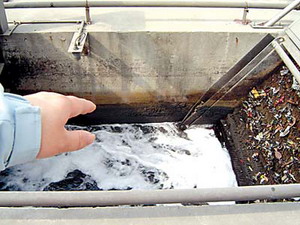 The Ministry of Environmental Protection and the General Administration of Quality Supervision, Inspection and Quarantine recently jointly issued the "Emission Standards for Water Pollutants in the Textile Dyeing and Finishing Industry", "Drainage Standards for Silk Recycling Industry Water Pollutants," "Emission Standards for Water Pollutants in the Wool Textile Industry," and "Mashino Industry The four emission standards, such as the Water Pollutants Emission Standards, together constitute the series of standards for the discharge of water pollutants from the textile industry. The new standards will be implemented from January 1, 2013.
The Ministry of Environmental Protection and the General Administration of Quality Supervision, Inspection and Quarantine recently jointly issued the "Emission Standards for Water Pollutants in the Textile Dyeing and Finishing Industry", "Drainage Standards for Silk Recycling Industry Water Pollutants," "Emission Standards for Water Pollutants in the Wool Textile Industry," and "Mashino Industry The four emission standards, such as the Water Pollutants Emission Standards, together constitute the series of standards for the discharge of water pollutants from the textile industry. The new standards will be implemented from January 1, 2013. The person in charge of the Department of Science and Technology Standards of the Ministry of Environmental Protection stated that the implementation of the new standard will increase the environmental protection threshold for the textile industry, help reduce the discharge of water pollutants, and promote the sustainable and healthy development of the textile industry. “The implementation of the four standards will effectively promote the reduction of pollutants in the textile industry. After the existing enterprises implement and reach the second phase of the emission limits, the emission of pollutants will be greatly reduced, including chemical oxygen demand and ammonia nitrogen. Compared with 2010, the reduction ratio is expected to reach 68% and 70%, respectively, and the environmental benefits are significant."
According to the person in charge, China is the world’s largest textile production and processing base. At present, China’s production of cotton yarn, cotton cloth, woolen goods, silk fabrics, chemical fiber products, and clothing ranks first in the world and is a major country in textile production and processing. In 2011, the total industrial output value of enterprises above the scale of textile industry was 3349.1 billion yuan, accounting for 3.9% of the country's total industrial output value. However, at present, China's textile processing is still dominated by medium and low-end products, and the added value of products is relatively low, while enterprises are mainly small and medium-sized. The level of production technology and technological innovation capabilities need to be further improved.
In recent years, due to the development of new products, new dyes, and new processes, while the quality, production efficiency, and water-saving efficiency have increased, the concentration of pollutants in the textile industry's wastewater has also increased dramatically, and environmental protection issues have become increasingly prominent. According to statistics, in 2010, the chemical oxygen demand and ammonia nitrogen emissions of the textile industry were 301,000 tons and 17,000 tons, respectively, which accounted for 8.3% and 7.1% of the total industrial emissions, respectively, ranking fourth.
With the acceleration of the construction of a resource-saving and environment-friendly society, higher demands have been placed on the textile industry in terms of energy conservation and emission reduction, elimination of outdated production capacity, and reduction of environmental impact. In order to effectively control the emission of pollutants from the textile industry, the National Environmental Protection “Twelfth Five-Year Plan†clearly stated that it is necessary to increase the elimination of backward production capacity in printing and dyeing and other industries, raise industry pollutant emission standards, and advance chemical oxygen demand and ammonia nitrogen. The total amount of emissions is controlled and the reduction ratio is not less than 10% of the planned target in 2010. At the same time, the newly issued “12th Five-year Development Plan for Textile Industryâ€, “12th Five-year Development Plan for Printing and Dyeing Industry,†and “Admission Requirements for Printing and Dyeing Industry†and other industry plans and policies have also proposed environmental protection for the textile industry. Specific requirements.
Garden Candle, Outdoor Candle, citronella Candle,Citronella Oil Candles,Terracotta Pot Candle, Outdoor Citronella Candle Manufacturer Wholesaler Ceramic Outdoor Garden Terracotta Citronella Candle
we can make the citronella candle with 3% or 5% citronella oil as customer's choose
different customer request different ,but for the candle shape we can make as customer's request
if you have any design of the citronella candle shape,pls kindly inquiry to us
Citronella Oil Candle,Scented Candle ,Mosquito Repellent Candle,Colorful Citronella Candles,Citronella Oil Candles
Aoyin xingtang candle co.,ltd , https://www.allincandle.com